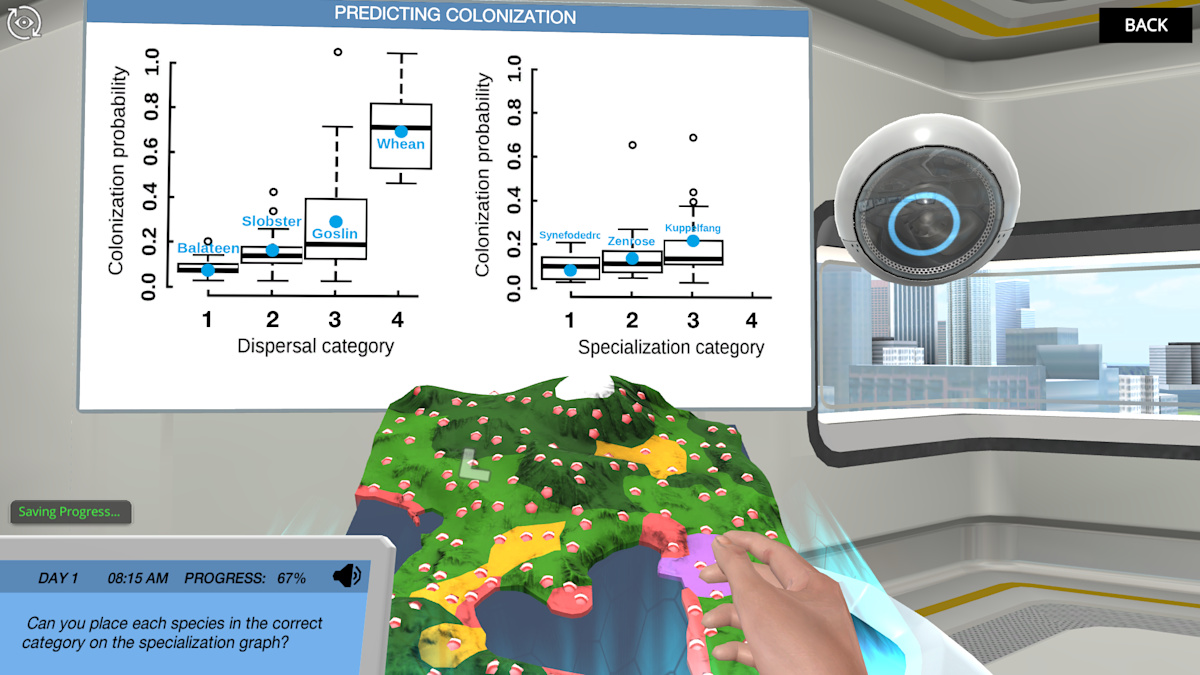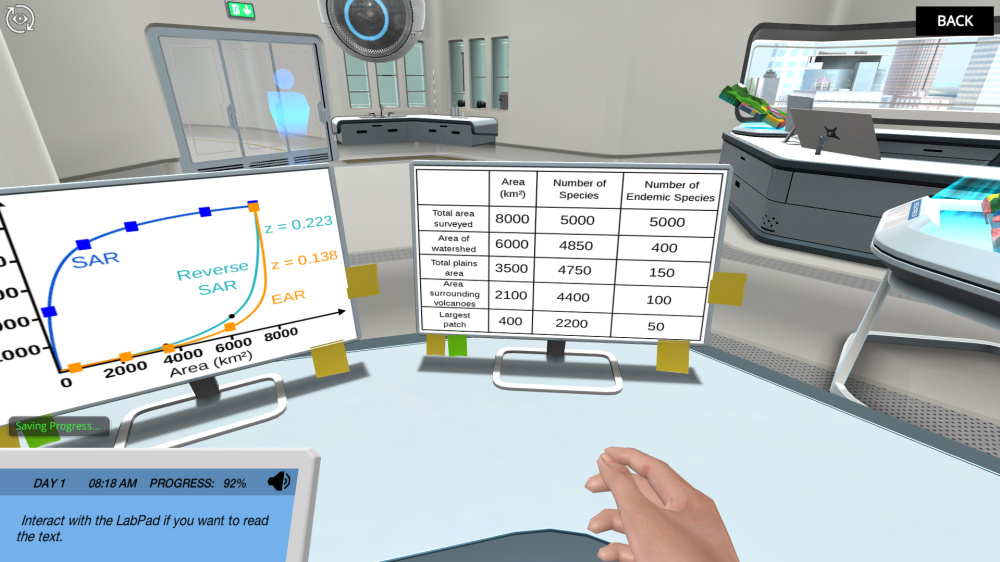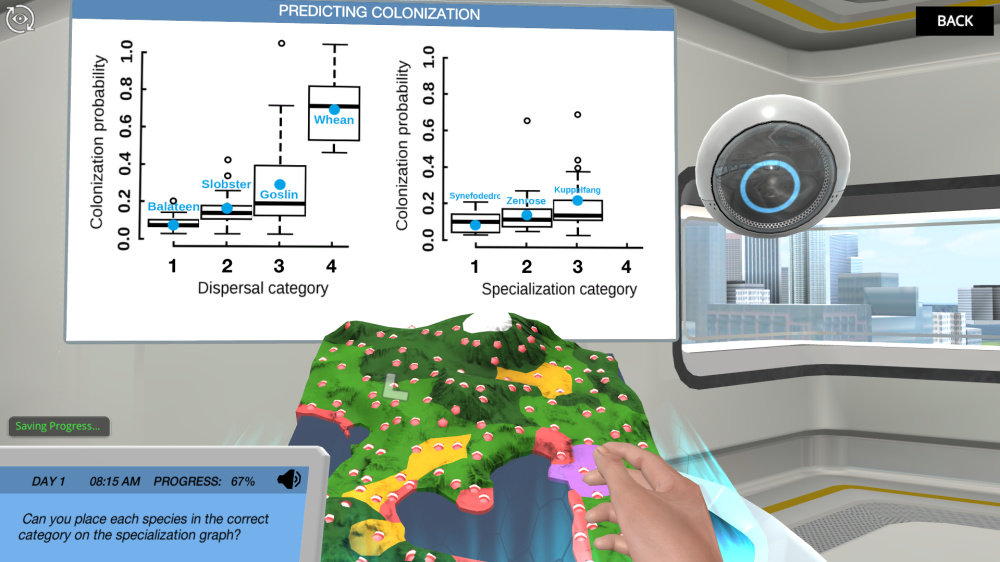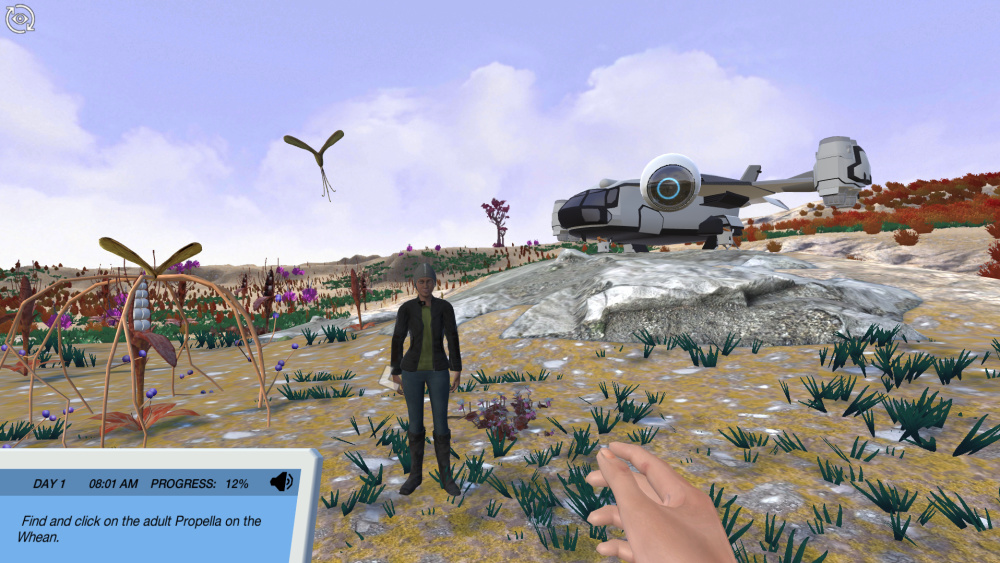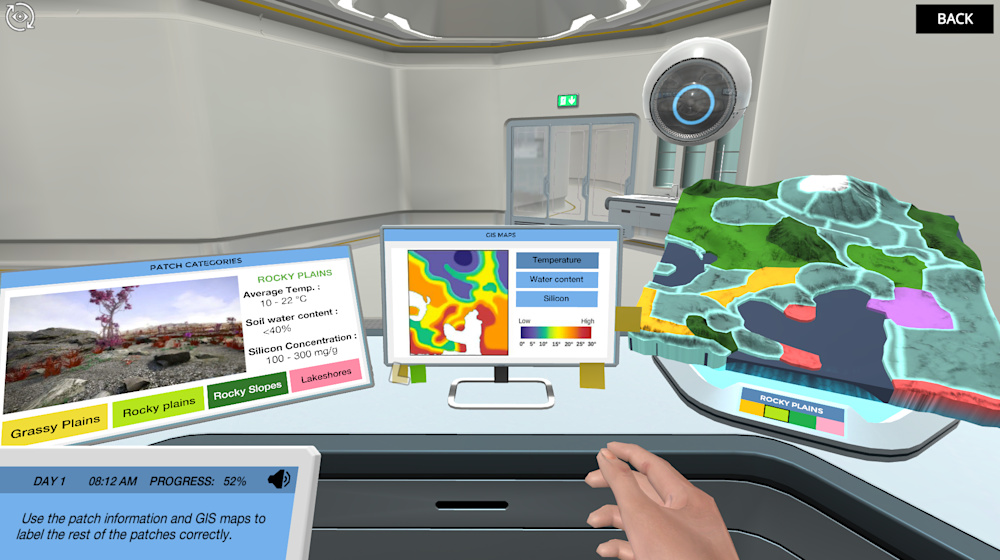Landscape Ecology: Determine persistence in a spatially heterogeneous landscape Virtual Lab
Discover unique areas within an exoplanet’s landscape and apply your findings to predict the persistence of an alien species by estimating colonization and extinction rates.

Try Labster's 30-Day All-Access Trial for Free
Discover one of our 200+ simulations today
- Description
- Features
About the Landscape Ecology: Determine persistence in a spatially heterogeneous landscape Virtual Lab
Not all areas within a landscape are created equal. When studying ecological processes in an environment, it is important to remember that landscapes may be spatially heterogeneous. In this simulation, you will learn to identify and compare unique patch types on the exoplanet Astakos IV and use their specific characteristics to help understand local population dynamics. Bioengineers need your help applying the principles of landscape ecology to determine if the persistence of the Propella species on Astakos IV is in danger.
Predict the Propella’s persistence on Astakos IV
A bioengineer has become fascinated by an interesting species on Astakos IV called the Propella that can generate energy from wind power. However, her team will not arrive from Earth for many years and she wants to know if the Propella species will continue to survive after the recent volcano eruptions and human growth on the planet. Using the principles of landscape ecology, you will examine colonization and extinction rates to predict the chance of the Propella’s persistence.
确定殖民和灭绝率s
You will use a variety of methods to estimate both colonization and extinction rates, which you will use together to predict the Propella’s population dynamics. Firstly, you will be tasked with interpreting GIS maps to identify a variety of different landscape patch types and paint a full mosaic of the landscape. Using impressive data visualization techniques layered on an interactive 3D map, you will analyze dispersal capabilities and specialization levels of a variety of species to help predict the colonization probability of the Propella. Extinction rates will be analyzed using both Species-Area Relationship and Endemics-Area Relationship. Finally, you will combine all of the accumulated data and landscape ecology principles to summarize the impact of recent volcano eruptions and human growth on the Propella’s population.
Suggest actions to improve persistence
You will complete your application of landscape ecology principles to predict the Propella’s chance of persistence and even suggest specific measures that could help increase the likelihood of its survival. Will you be able to help the bioengineers ensure that the Propella will be around long enough to learn its secrets?
Discover unique areas within an exoplanet’s landscape and apply your findings to predict the persistence of an alien species by estimating colonization and extinction rates.
At the end of this simulation, you will be able to...
- Determine factors that affect the location of patches within a landscape
- Calculate species extinction rates using species-area and endemics-area theory
- Estimate species extinction and colonization rates in a heterogeneous landscape
- Explain the impact of landscape spatial heterogeneity on population dynamics
Length: 50 Minutes
Accessibility mode: Not available
Languages: English (United States)
High level content, could support HS-LS2-6
No direct alignment
No direct alignment
